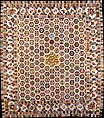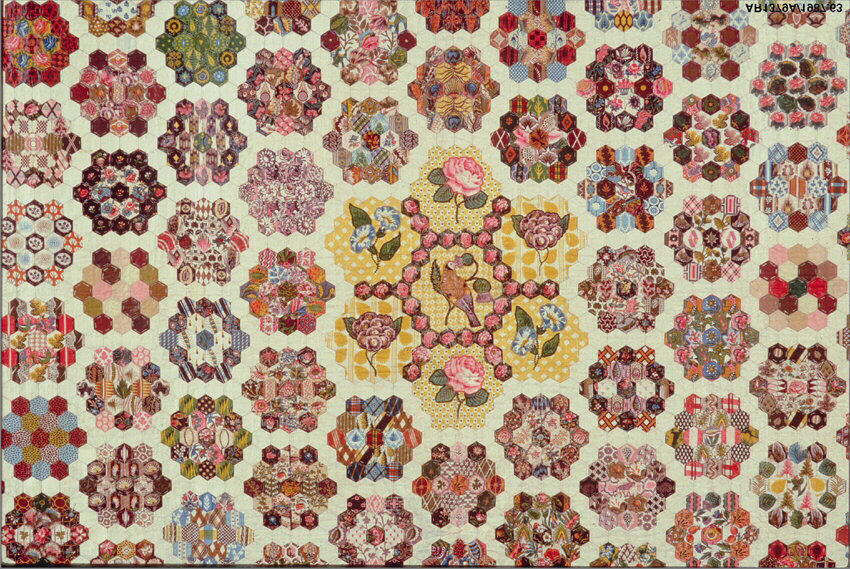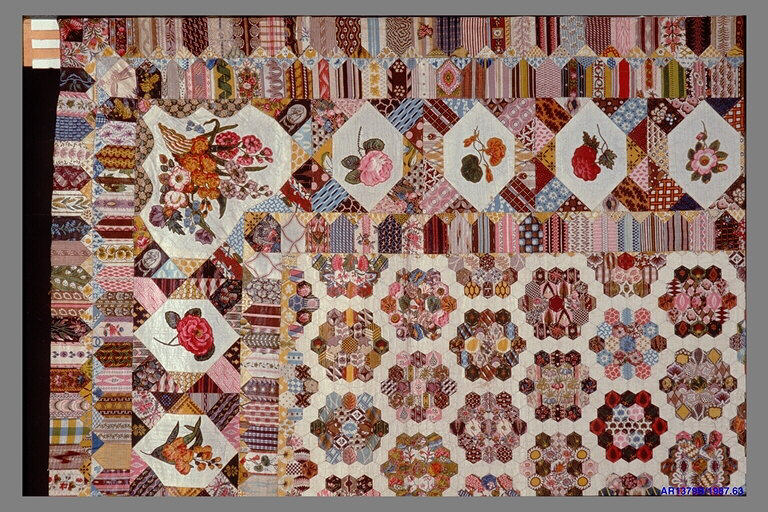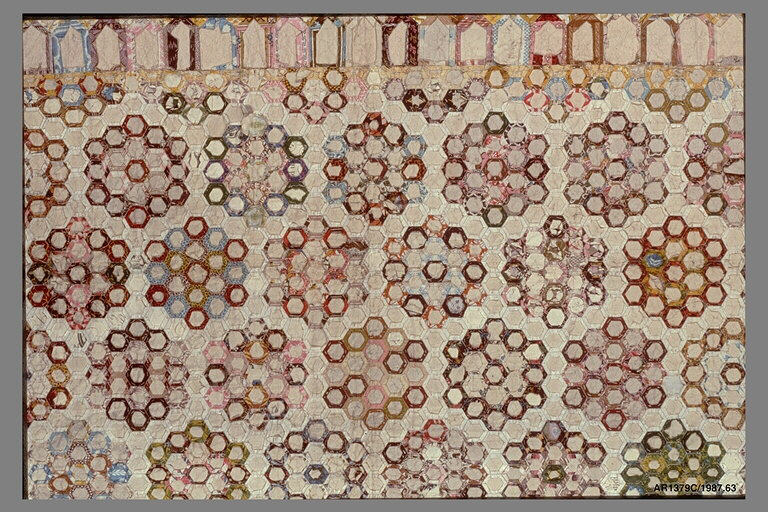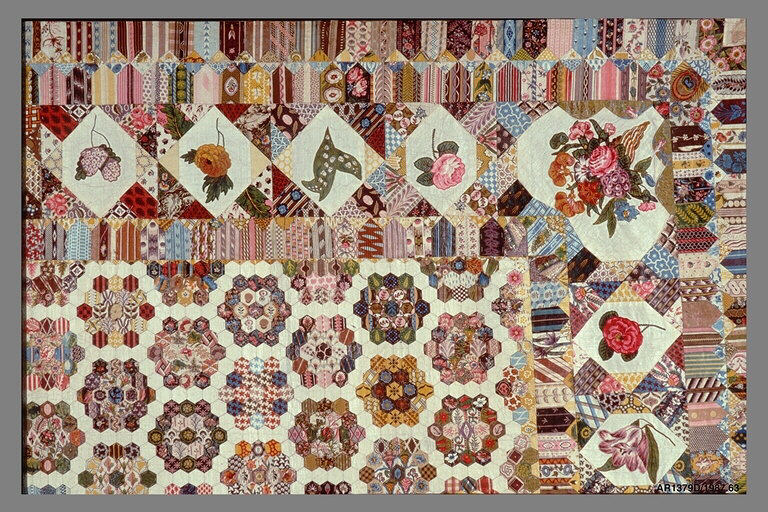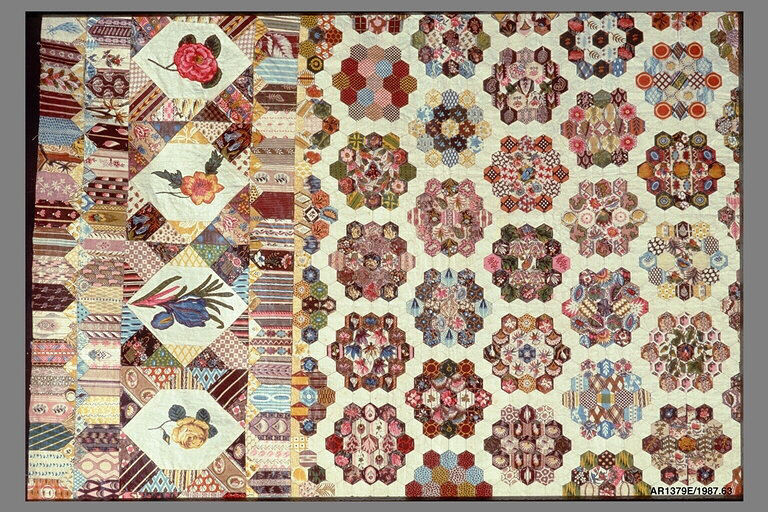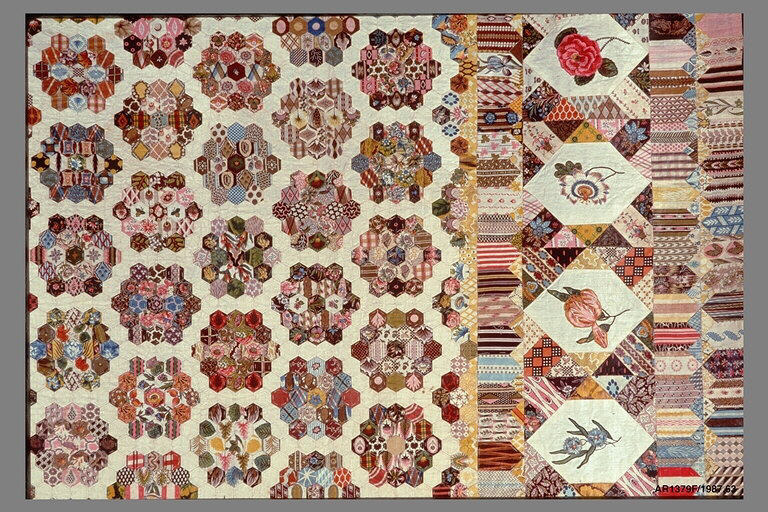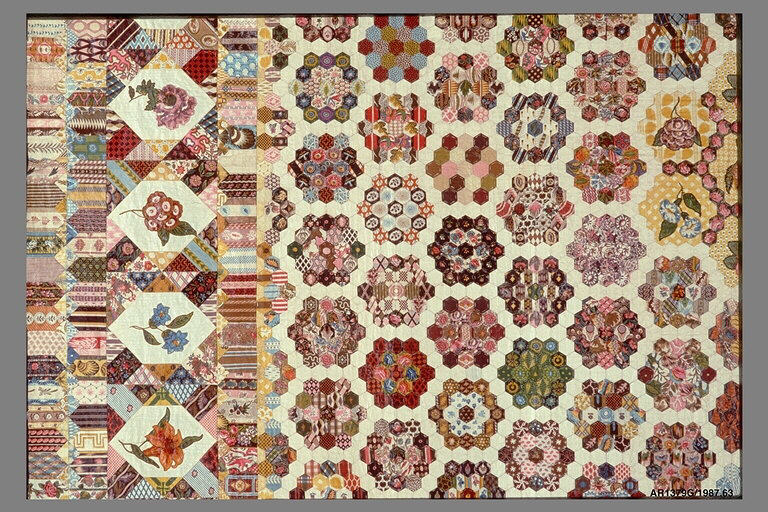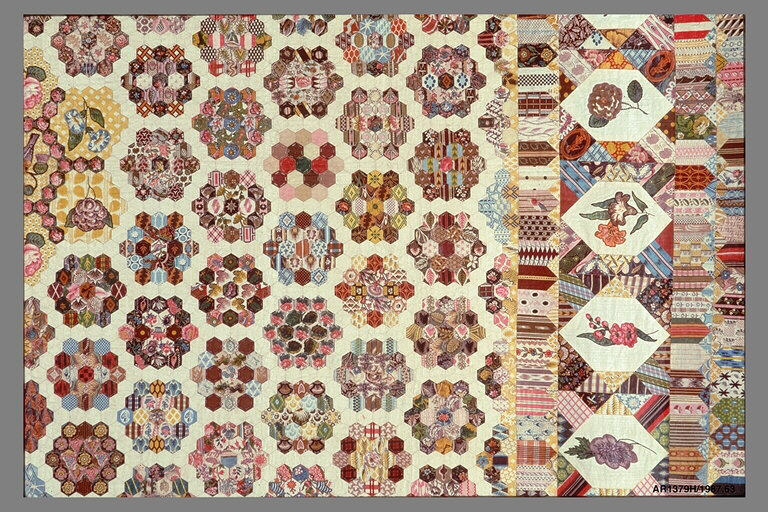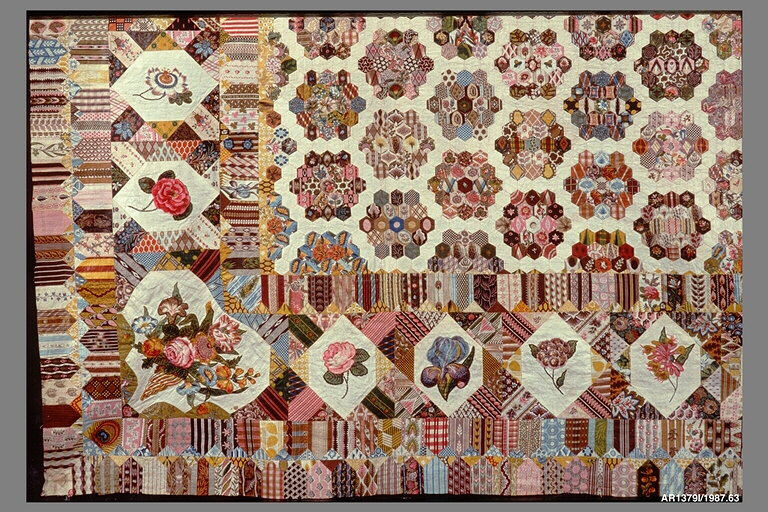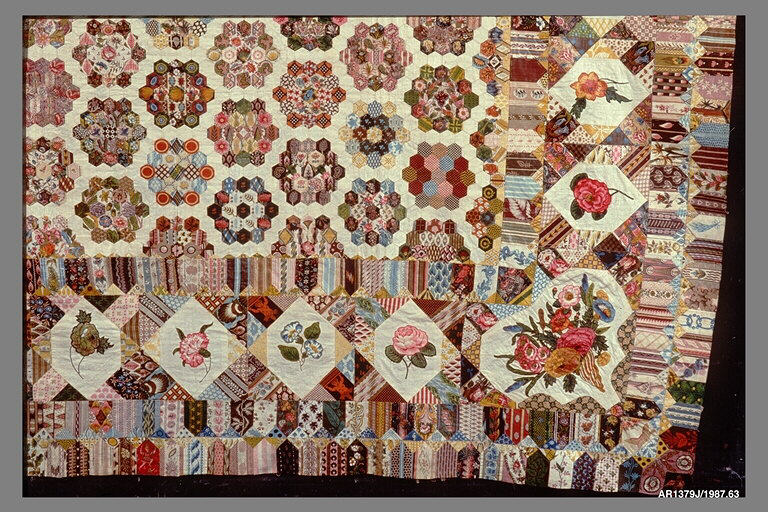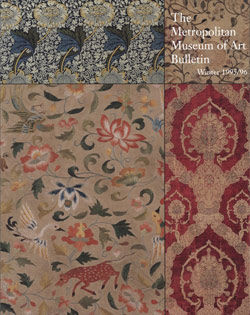Quilt
Not on view
Patchwork quilting is usually associated with America, but it also has a tradition in Europe, particularly in Germany and England. The number of differently patterned printed cottons used in this quilt top, ranging in date from the 1790s to the 1820s, suggests that the maker had access to sample books or samples. Although such a wealth of fabrics offered a design opportunity, the small size of each sample could have been limiting. The maker, however, turned this challenge into a strength. For some of the hexagons, motifs were cut from several patterns and juxtaposed for a controlled kaleidoscopic effect; others were composed of different color combinations of the same design. In the outer guard borders, the tentlike shapes are each made of a different fabric; that may perhaps indicate the prevalent sample size. The large floral motifs and the central bird are executed in a different technique, "broderie perse," in which the forms are removed from larger pieces of glazed printed cotton and applied to the quilt top with crewel embroidery, which is also used for the flower stems. On the back of the quilt top, bits of old bills and correspondence appear in the hexagonal paper templates used as cutting guides.
Due to rights restrictions, this image cannot be enlarged, viewed at full screen, or downloaded.
This artwork is meant to be viewed from right to left. Scroll left to view more.
